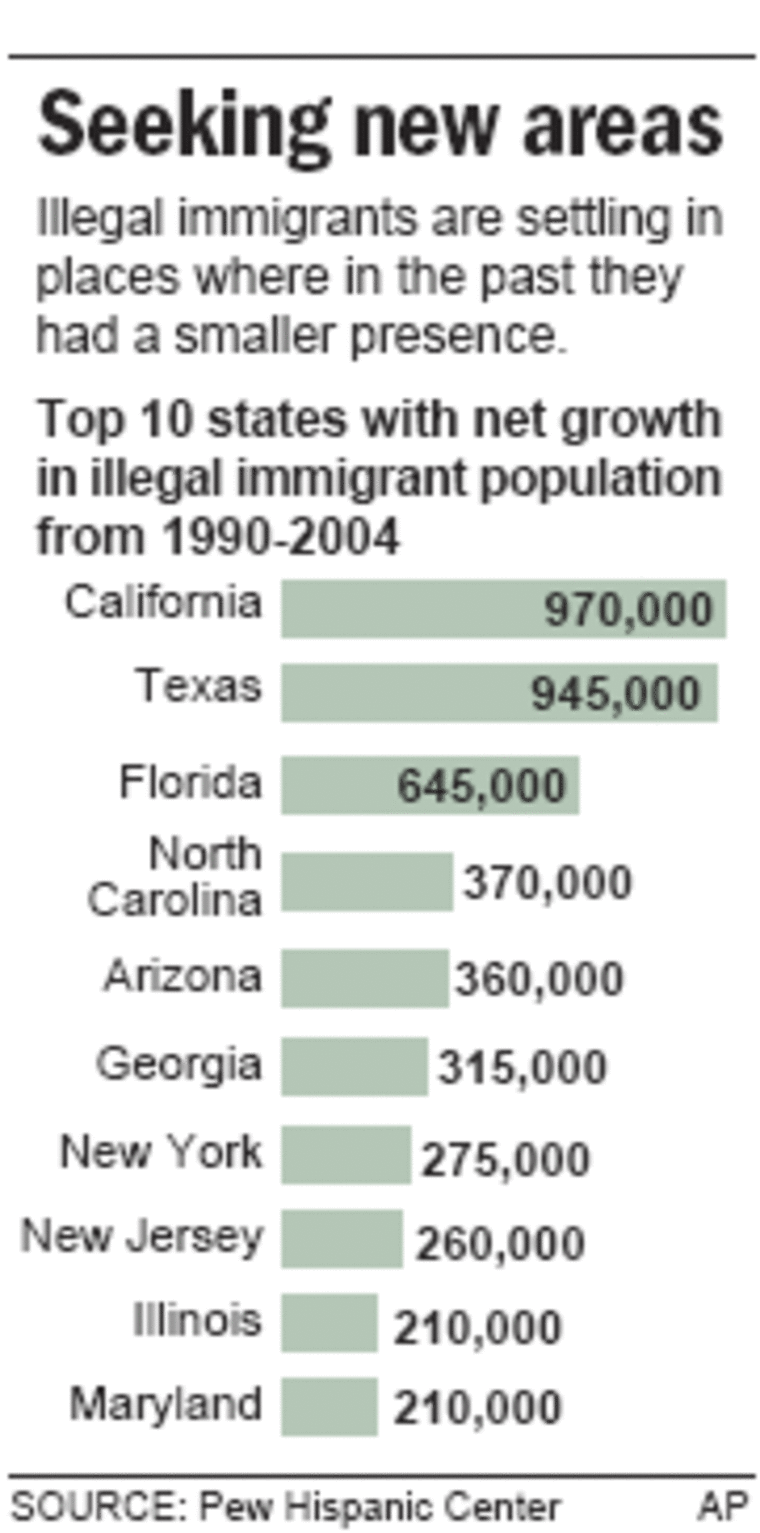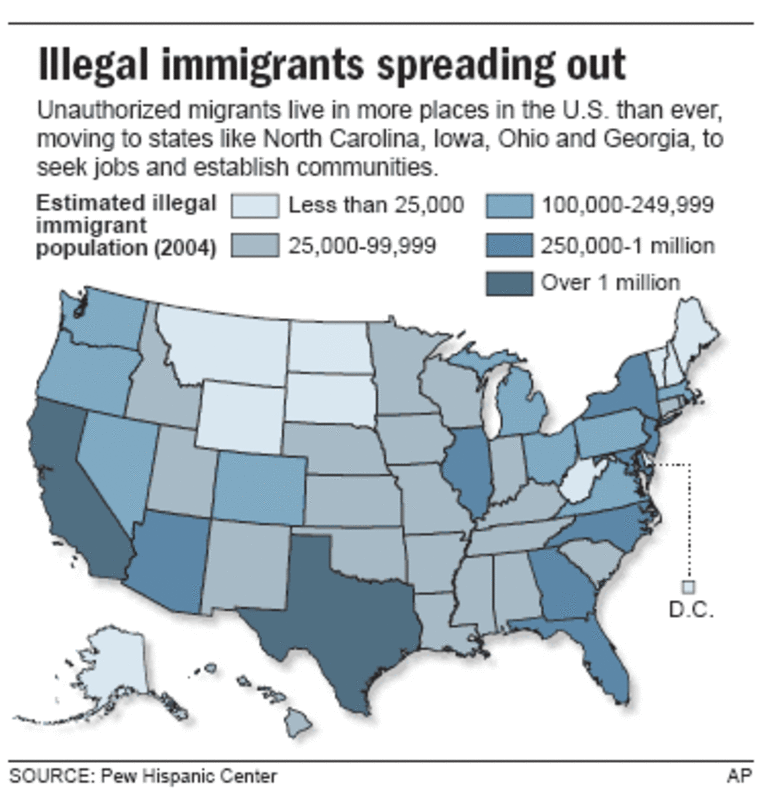They are more likely than American citizens to hold jobs but less likely to have high school diplomas. They tend to be younger, and many have children who were born in the United States, making the kids citizens.
They are illegal immigrants, their numbers estimated at 12 million as the question of what to do about them reaches a boiling point on Capitol Hill.
Less than half fit the profile of young men sneaking across the border to find jobs and send money back home to their families. Today, most bring their families with them, according to an analysis by the Pew Hispanic Center, a research organization in Washington.
“There’s about 6.5 million adults who are in families, either couples or couples with children, and there’s another 2 million children,” said Jeffrey Passel, a senior research associate at the center. “The vast majority of this population is families.”
Immigration has become a national issue as the Senate debates legislation that would tighten border security while enabling illegal immigrants to eventually become citizens.
No longer a regional concern
One reason for the sudden broader interest: These immigrants now live in more cities and states than ever.
In 1990, almost half lived in California, the Pew analysis said. By 2004, California’s share had dropped to about a quarter, even though the state’s illegal population had grown from 1.6 million to about 2.4 million.

They are moving to states like North Carolina, Iowa, Ohio and Georgia, as they seek jobs and establish communities. North Carolina has nearly 16 times the number of illegal immigrants it had in 1990, the Pew analysis said. The state had 390,000 in 2004, the most recent state numbers available.
“It’s not a regional issue anymore,” said Randy Capps, a senior research associate at the Urban Institute, a Washington think tank. “It’s a national issue.”
The Pew center estimates there are as many as 12 million illegal immigrants in the United States, though researchers acknowledge that they are difficult to count. Other organizations have put the number at 11 million, but all agree the total is rising quickly.
Overstaying welcome
About a quarter of them arrive in the United States legally and simply overstay their visas, Passel said.
“We have about 30 million people per year come here on temporary visas, either tourists or visitors for business,” he said. “With 30 million folks coming here a year, a very small percent who stay adds up over the years.”
Adult men make up the largest share of illegal immigrants, followed by adult women and then children.
Many families include relatives of differing immigration status. Nearly two-thirds of the children were born in the United States, making them U.S. citizens.
Illegal workers make up about 5 percent of the U.S. labor force. More than nine in 10 males illegally here are in that labor force, compared with 83 percent of men born in the United States.
Younger workers
Illegal immigrants tend to be younger than American workers, which helps explain why they are more likely to hold jobs, researchers said.
Female illegal immigrants, however, were less likely to work than their American counterparts, perhaps because most have young children, the Pew analysis said.

Illegal immigrants are concentrated in construction, agriculture and cleaning jobs. They make up 36 percent of all insulation workers, 29 percent of agricultural workers and 29 percent of roofers.
The Center for Immigration Studies, which advocates restricting immigration, recently issued a report saying that immigrants compete for jobs with less-educated Americans, especially high-school dropouts.
About half of adult illegal immigrants have not graduated high school, the Pew analysis found. About a third have less than a ninth-grade education.
About a quarter of illegal immigrants have at least some college, with 15 percent holding at least a bachelor’s degree.